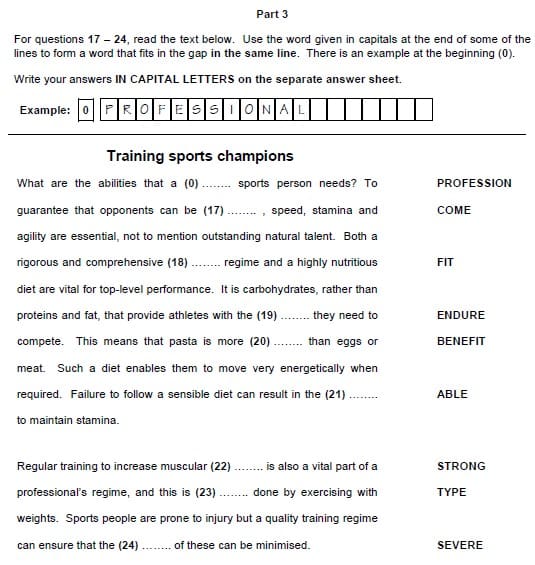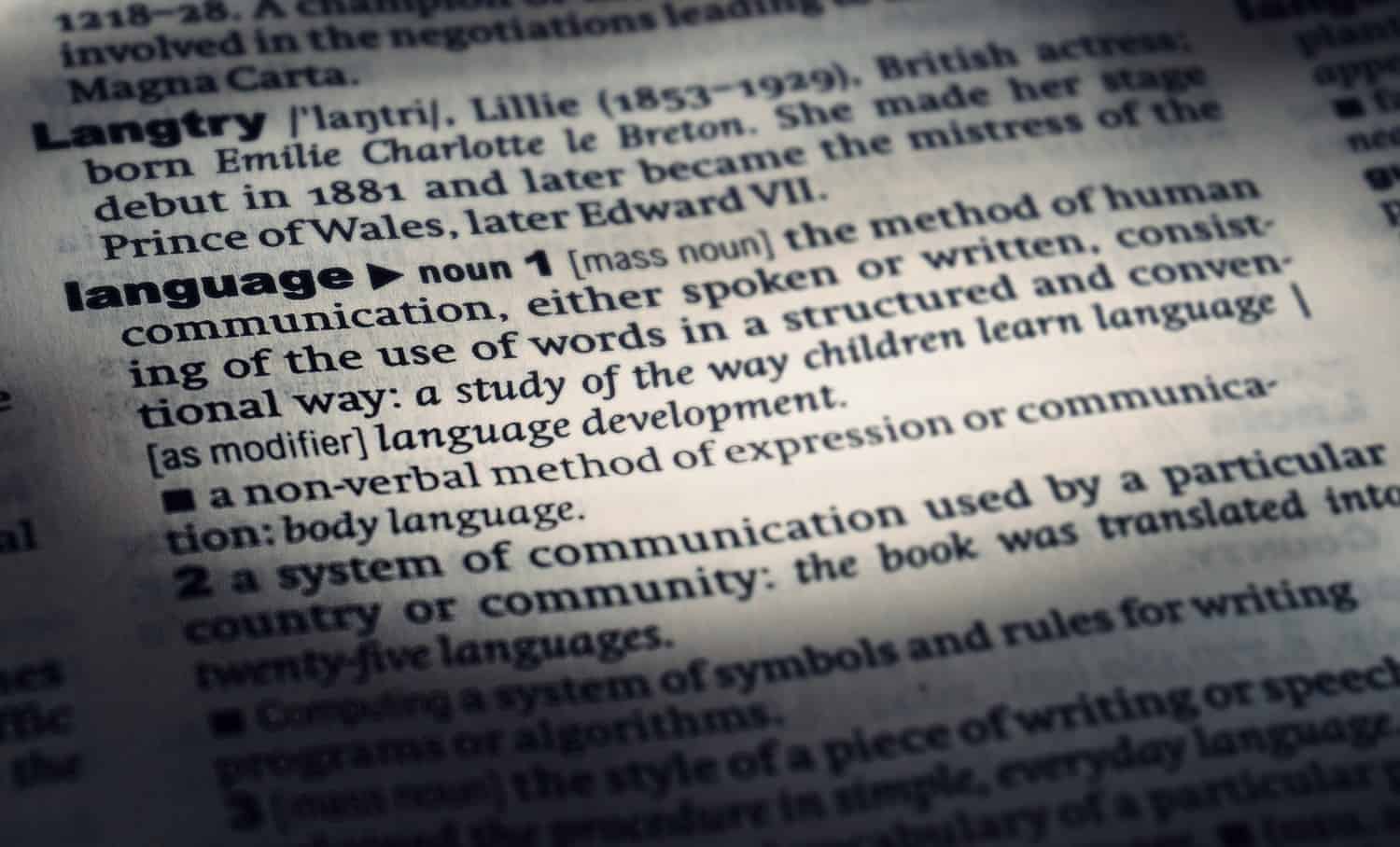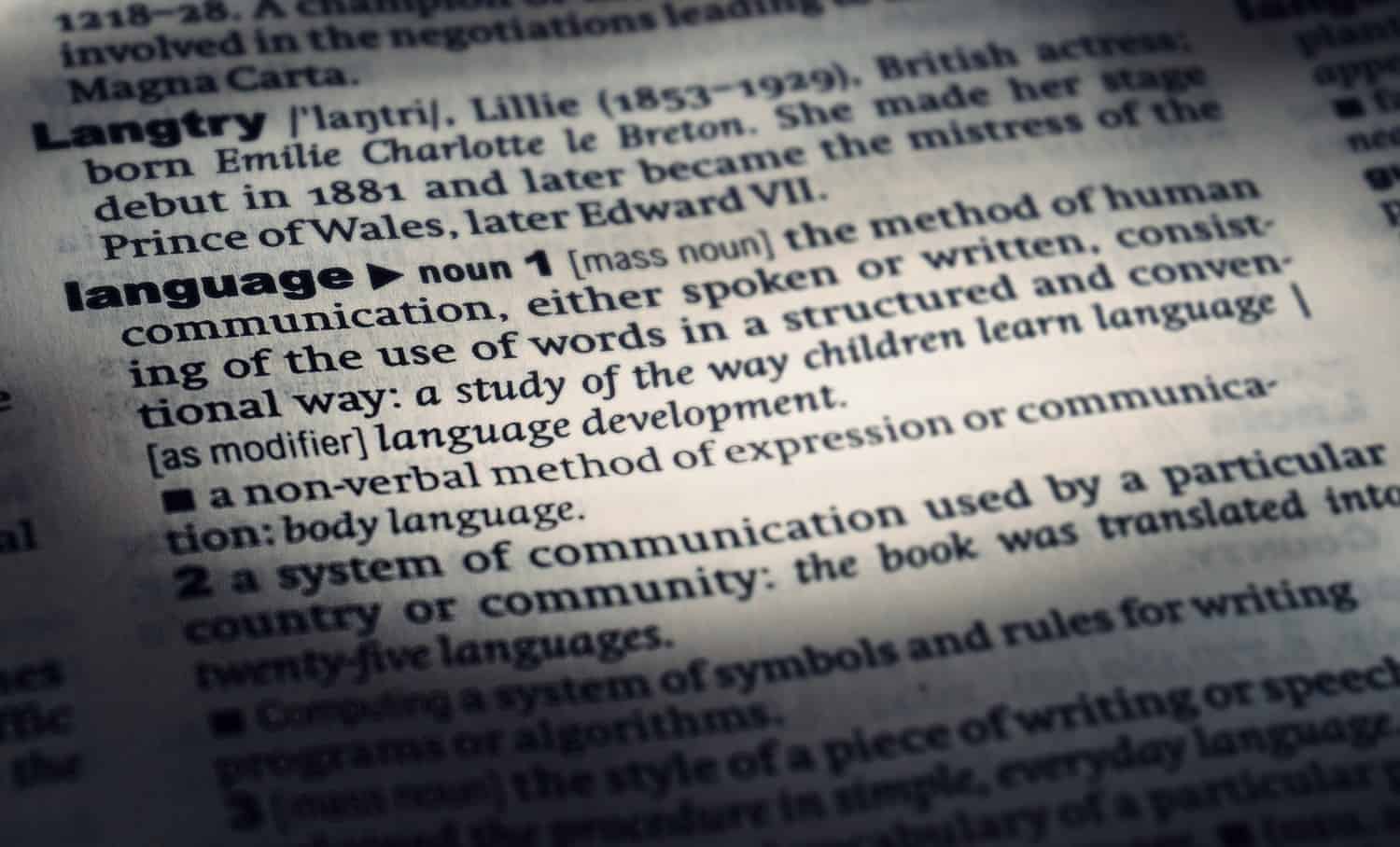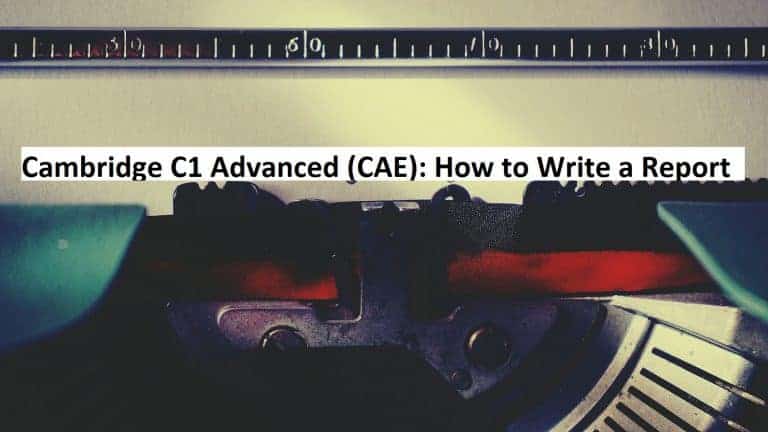Reading and Use of English Part 3
I always notice a big difference in my students’ reactions depending on which task of Reading and Use of English I want to practise with them. While, for example, the first two parts are universally hated, Part 3 receives quite a lot of love and students almost enjoy this type of exercise.
For me, Reading and Use of English Part 3 is just as important as all the other parts, but it comes with its unique requirements and skills tested. Combine that with the immense pressure of having only 90 minutes to complete the whole test and you know that this article is necessary.
In this article, I’m going to teach you everything you need to know in order to ace this part of C1 Advanced. We are going to explore what you have to do as well as useful tips and strategies to set you on the right path.
Before you dive into the nitty-gritty of Reading and Use of English Part 3, however, it might be a good idea to develop an understanding of how the whole exam paper is structured. This should be part of your preparation and strategy as there are different important things to consider when looking at the eight tasks as a unit. Simply follow the link below to get up to speed.
>>> Everything you need to know about C1 Advanced Reading and Use of English <<<
What do you have to do in Part 3?
Part 3 – Word formation: A text containing eight gaps. Each gap corresponds to a word. The stems of the missing words are given beside the text and must be changed to form the missing word.

As you can see, the first gap is numbered ‘0’. This is the example and you shouldn’t try to fill this in. You need to start with gap 17. Again, do not do the example because the answer is already there for you.
In Reading and Use of English Part 3, you have to show your knowledge of word families. These are groups of words derived from the same stem word, for example:
| word stem | noun | plural noun | verb | adjective | negative adjective | adverb |
| use | use, usage, user | uses, users | use, reuse, etc. | useful, usable | useless, unusable | usefully |
We can modify the stem in order to create other parts of speech like nouns, verbs, adjectives and adverbs. To achieve this, we normally use affixes, which are little beginnings (re-, un-, etc.) or endings (-ive, -less, -able, etc.).
Part 3 is one of the three sections that make the Use of English exam paper (Parts 2 and 4 are the others). As I mentioned earlier, it is really important that you know how Reading and Use of English works so you can prepare and practise the right way. Click the link below to find out more.
>>> C1 Advanced Reading and Use of English EXPLAINED <<<
The 3 most common problems with Part 3
This is the part nobody wants to admit to, but everybody struggles with at least one of the points I’m going to mention. Reading and Use of English is not designed to be fair. It is not made to make you feel secure and comfortable.
Instead, it is designed so you can screw it up in as many places as possible. You need to be aware of what’s going on and where the difficulties are hidden.
Over the years, I have identified three very common problems, which I’m going to share with you now, and afterwards, we are going to have a look at tips and strategies to circumnavigate these issues.
Candidates don’t know what to do
This first one sounds silly, but believe me when I tell you that it is much more common than you might think. There are so many people who enter the arena unprepared and are surprised that many of the tasks are not as straightforward as one might think.
Therefore, it is absolutely crucial for you to study not only the language itself but also the exam structure and every single task with each one’s requirements, traps and unique features. Only then will you be able to ace it and pass with the marks you desire.
Word families
As I mentioned earlier in this article, Reading and Use of English Part 3 focuses on your knowledge of word families and your ability to transform a word stem into whatever form is necessary to fill in the gaps in the text.
While this might sound straightforward and almost simple, many students only know little about this and struggle quite a bit when they are presented with similar tasks during practice.
Unfortunately, there is no way around it and you really have to dig in your heels and study. Of course, a big part of it is experience with the language through reading and listening, but a little bit of extra work is definitely necessary.
If you don’t want to be the Dr Frankenstein of the English language who creates weird words that don’t even exist, get into a practice habit and note down not only new words themselves but also related forms as I showed you earlier.
Time management
Last but not least, I want to have a quick look at the timing of Part 3. In Reading and Use of English, you only have 90 minutes to complete eight tasks and transfer all your answers onto a separate answer sheet which you receive at the beginning of the test.
If we allocate around five minutes for the answer sheet, we are left with just around 85 minutes to actually work on the questions or roughly 10 1/2 minutes per task.
Believe me, this is not a lot of time and you should familiarise yourself with the exam as quickly as you can so you can find your strengths and weaknesses and develop strategies to work with that.
Don’t wait too long and start thinking about it today. You can thank me for it when you get your certificate. 🙂
Tips and strategies for Part 3
When it comes to C1 Advanced, there are several pieces of advice I can give you. First of all, start practising as soon as possible. The fact that you are reading this article right now puts me in an optimistic mood, but you have to stick with it until the day of the exam. Believe me, the earlier you start your work, the better the results are going to be.
General practice
You might wonder what kind of practice I recommend after I told you how important it is. Well, there are basically three big areas of practice: general, language development and exam practice. While the latter two are very specific and on teacherphill.com we focus mostly on the exam and the right strategies, the former cannot be undervalued.
Immersing yourself in a new language can have tremendous benefits and even though you might not be in an English-speaking country, you can still find English wherever you go. For starters, the internet is mostly English and you can find English websites, YouTube videos, films, podcasts and many other types of media ready for you to consume.
The great thing about this is that your brain just does the work for you and processes a lot of language subconsciously. It’s basically like learning in your sleep. Of course, you have to look up some expressions in a dictionary, but just the recurring structures and words get burned into your memory and then, when you see them again, you recognise them without even thinking twice.
So, try to establish a routine for yourself where you read, listen and watch a little bit in English every day. Start with five minutes of reading a news article or book, listening to a podcast about a topic you enjoy or re-watch Friends but this time in English. You will see the benefits within a couple of weeks.
Make a plan
Once you’ve established a general practice routine and you see your language skills improving bit by bit, you need to start looking at the exam itself. In Reading and Use of English, there are very specific requirements for each task with Part 3 being no exception.
It is vital for your success in C1 Advanced to come up with a plan so you know exactly what to do even when you get into time trouble and your nerves start messing with you.
For this task, a plan might look like this:
- Read the title and text quickly.
- Analyse the gaps.
- Change the keywords and put them in the gaps.
- Read the text again.
This plan may look simple, but I have seen so many students who forget even this little bit of information and when the time comes to do the task they mess it up as there is more work involved as these few words seem to express.
So, let’s have a look at the plan step by step.
Read the title and text quickly
This first step is optional if you are really confident in yourself and your reading skills. However, I recommend doing it anyway as it gives you a first overview of the text and its main idea. This can help you later when you need to analyse the text and predict what forms of the keywords need to go in each gap.
You can give it a go during practice and check if it helps you or not.
Analyse the gaps
Now in this step, you need to put your English skills to work. Your knowledge of word families becomes the deciding factor, but first of all, we have to look at the gaps and at what’s going on before and after each one of them in order to check what part of speech (noun, verb, adjective, adverb, etc.) is needed in these particular sentences.

Looking at the example task from earlier, we can go through a couple of examples together.
Gap 17 offers us a great starting point. The sentence talks about different skills like speed, stamina and agility and that they are really important to do something with opponents. The most common thing we want to do with an opponent in sports is to beat them so it would be a good idea to find a synonym for that.
Change the keywords and put them in the gaps
The word we are going to put in the gap needs to be a verb that means ‘beat’ and the word stem here is ‘come’. The only verb that fulfils both requirements is ‘overcome’. By adding a prefix we are able to modify the word stem and create the perfect word for the gap.
You now have to repeat those two steps for the other gaps and you are good to go. Always look at the information around the gaps first, decide what part of speech is required and then modify the keyword.
Read the text again
This last step is, unfortunately, often undervalued and gets lost in all the stress, but it is a very important step regardless.
Once you’ve finished, read through the text one last time and check if the words you’ve chosen make sense in the specific context of the task. This way, you can catch mistakes that you made because of focusing too much on the tiny details instead of looking at the big picture.
Other tips
Being specific to Reading and Use of English Part 3, it is a good idea to get into the routine of studying word families. First of all, make sure that you note down new words as soon as you come across them, but don’t stop there. Create a table like the one further above in this article so you can easily add the other forms of each word. Most online dictionaries give you these forms in the sidebar of the website for easier access to related search terms.
While setting up a recording system is not that hard, you need to develop a practice routine as well. Allocate a few minutes every day to revising your word lists and families to ingrain them deeply in your memory.
Last but not least, don’t forget to always answer all the questions in the exam. Even if you guess the wrong word, you can’t lose marks in C1 Advanced. The worst thing that can happen is that you won’t get the mark you wouldn’t have scored by not answering the question anyway. You can only win so don’t let the opportunity pass.
Now it’s your time to shine
With all the information in this article, you should be able to become very good at Reading and Use of English in a very short time. Get into a language habit and work towards your goals – it is your time to shine.
Lots of love,
Teacher Phill 🙂














